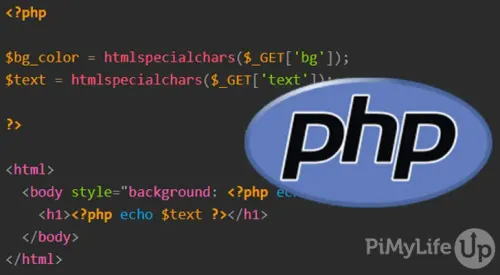Email Validation in PHP: A Comprehensive Guide
Understanding Email Validation in PHP
Email validation is a crucial step in ensuring data integrity and accuracy in web applications. Whether you’re building a simple contact form or a complex user registration system, implementing robust email validation in PHP can help prevent errors and ensure that only valid email addresses are accepted. This article will explore various techniques for validating emails in PHP, along with practical code examples and best practices.
Why is Email Validation Important?
Validating email addresses serves several purposes:
- Data Integrity: Ensures that the data collected is accurate and usable.
- User Experience: Provides immediate feedback to users about their input, reducing frustration.
- Spam Prevention: Helps to filter out invalid email addresses that could be used for malicious purposes.
- Improved Deliverability: Validating email addresses can improve the chances of emails reaching the intended recipients.
Common Methods for Email Validation in PHP
PHP offers various methods for validating email addresses. Below are some commonly used techniques, along with code examples to help you implement them.
1. Using PHP’s Built-in filter_var()
One of the simplest ways to validate an email address in PHP is by using the built-in filter_var() function. This function is easy to use and provides a reliable method for validating email addresses.
$email = "example@example.com";
if (filter_var($email, FILTER_VALIDATE_EMAIL)) {
echo “$email is a valid email address.”;
} else {
echo “$email is not a valid email address.”;
}
Explanation: The filter_var() function checks if the provided email address conforms to the standard email format. If it does, it returns the email address; otherwise, it returns false.
2. Regular Expressions
Regular expressions (regex) offer a powerful way to validate email addresses. You can create custom validation patterns to match specific requirements.
$email = "example@example.com";
$pattern = "/^[a-zA-Z0-9._%+-]+@[a-zA-Z0-9.-]+\.[a-zA-Z]{2,}$/";echo “$email is a valid email address.”;
} else {
echo “$email is not a valid email address.”;
}
Explanation: The regex pattern checks for the general structure of an email address, ensuring it contains an @ symbol, followed by a domain name and a valid top-level domain.
3. DNS Check
Another method to validate email addresses is by checking if the domain has valid DNS records. This can help ensure that the email address is not only syntactically correct but also belongs to a functioning domain.
$email = "example@example.com";
$domain = substr(strrchr($email, "@"), 1);echo “$email has a valid domain.”;
} else {
echo “$email does not have a valid domain.”;
}
Explanation: The checkdnsrr() function checks if there are valid MX (Mail Exchange) records for the domain, which indicates that the domain is capable of receiving emails.
Best Practices for Email Validation in PHP
Implementing email validation is not just about checking if an email address is valid. Here are some best practices to keep in mind:
- Use Multiple Validation Techniques: Relying on a single method may not be sufficient. Combining several validation techniques can enhance accuracy.
- Provide User Feedback: Always give users feedback about their input. If an email address is invalid, let them know why.
- Consider Using a Third-Party Library: Libraries like
Respect\ValidationorSymfony\Validatorcan simplify email validation and provide more features. - Handle Edge Cases: Be aware of edge cases such as new TLDs, long email addresses, and internationalized email addresses.
- Sanitize User Input: Always sanitize user input to prevent XSS (Cross-Site Scripting) and SQL injection attacks.
Implementing Email Validation in a Form
To demonstrate email validation in a real-world scenario, let’s create a simple HTML form with PHP validation.
HTML Form
<form method="post" action="validate_email.php">
<label for="email">Enter your email:</label>
<input type="email" id="email" name="email" required>
<input type="submit" value="Submit">
</form>
PHP Validation Script (validate_email.php)
if ($_SERVER["REQUEST_METHOD"] == "POST") {
$email = $_POST["email"];if (filter_var($email, FILTER_VALIDATE_EMAIL)) {
// Check DNS
$domain = substr(strrchr($email, “@”), 1);
if (checkdnsrr($domain, “MX”)) {
echo “$email is a valid and deliverable email address.”;
} else {
echo “$email is a valid email address, but the domain is not deliverable.”;
}
} else {
echo “$email is not a valid email address.”;
}
}
Conclusion
Email validation in PHP is essential for maintaining data integrity and improving user experience. By employing various methods, such as using built-in functions, regular expressions, and DNS checks, you can ensure that your application handles email addresses effectively. Remember to follow best practices, such as providing user feedback and considering edge cases, to enhance your validation process. With these techniques and practices, you can confidently validate email addresses in your PHP applications.






